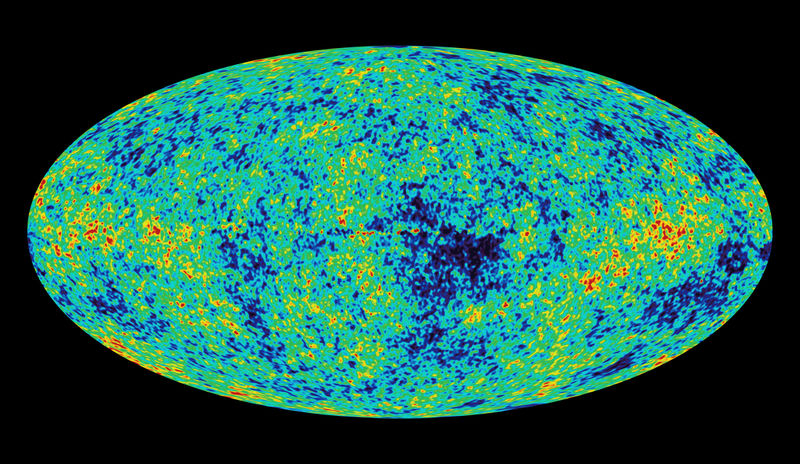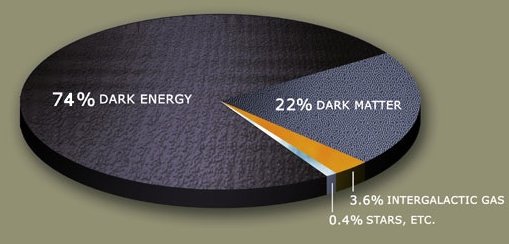Imagine you're baking a Victoria sandwich cake. You've printed out the instructions and have all the ingredients at hand: the flour, the eggs, the butter, baking powder and sugar.
Now imagine you can only see the baking powder. All the other ingredients are there, but invisible to all your senses.
Let's say you could somehow manage to get each item into a bowl. The next conundrum? Whipping the butter and sugar into smooth, light and airy batter would be no mean feat - how would you know you have the right consistency? As a baking novice, I've read of the complications that arise from over mixing - a chewy, dense cake - and nobody wants granny to lose her dentures over this thought experiment.
 |
|---|
All the best bits of cake construction would be decidedly crap. Bowl licking antics turn into choking down baking powder, and when you pop it in the oven at 190oC, it doesn't waft delicious cakey smells. The end result? Well, it would certainly be airy.
Let's face it; if I were to present this on the Great British Bake Off, I wouldn't be glimpsing Mary Berry's iconic side bite.
Yet this is basically equivalent to our understanding of the universe: Of the 4% we can see, less than an eighth of it is visible to our naked eye - the planets, the stars and all things closer to home on Earth - and the other 3.6% is just cold gas floating around space.
The remaining 96% is 'dark'. When scientists say dark, it basically means they haven't foggiest as to what it is. Worse still, scientists are not even entirely sure we will ever be able to detect it, although that hasn't stopped them trialling bizarre ways to trick dark matter into revealing itself.
The problem is that this substance is completely unlike anything mankind has ever seen. First off, it doesn't interact with anything. That means light - at any wavelength - doesn't bounce off it. It doesn't emit anything either; nor does it interact with atoms, electrons or any of the other subatomic particles. Galaxies smash together, but dark matter just cruises on by. This being the case, how can we even be sure it exists?
The only very subtle clue is that there is something rather than nothing is that dark matter has a mysterious effect on gravity and sound. I hear eyebrows rising at the thought of the latter - "Sound in space? But it's a vacuum. If I screamed in space, nobody would hear me."
It's true. But when the universe was first forming, it was so dense that sound could travel through space - and believe me - you would be screaming, albeit briefly, with temperatures rocketing to a stifling four thousand degrees. Astronomers can see these sound waves today because they're imprinted on something called the Cosmic Microwave Background (CMB). These sound waves, despite being billions of years old, cause tiny temperature fluctuations in the CMB and scientists can unpick the origins of our universe, and dark matter, by looking at them.
 |
|---|
Sound travels differently depending on what it's travelling through (think water versus air) and because of that, we can infer something about the stuff it's moving through. If we turn back to the skies then, we can see these sound waves are being dampened by something. Ergo, something is affecting these early sound waves.
But that's not where the first hint of this elusive stuff came from. From his perch on Caltech's Mount Wilson Observatory, Fritz Zwicky photographed a small section of the night sky. If you held your hand at arm's length, the section of the sky Zwicky was observing at is about the same size of your thumb nail. Within that thumb nail-sized slice of the sky are a few thousand galaxies, bunched together in gravitational knot called the Coma Cluster.
Under the influence of gravity, all the galaxies within the Coma Cluster orbit one and other, much like how Venus, Earth and Mars all swivel around the Sun.
One of Newton's brilliant insights was that gravity is a predictable force that acts on all matter in the universe, and the amount of gravitational force on an object is proportional to its mass. With this equation, Zwicky could calculate the mass of the cluster by observing how fast the galaxies were swivelling around.
Except, the maths didn't add up; when he took direct measurements of the total light emitted from the trillion or so stars in the Coma Cluster, there was a huge shortfall. They're simply weren't enough stars and galaxies to account for the speed at which these galaxies were travelling.
Without this extra mass, galaxies should just fly off - like a small child on a roundabout. The galaxies needed to contain about 80-90% more matter for them to stick together. Think of a whale on that same roundabout - it isn't going to take off any time soon.
Zwicky speculated it might be called something called 'dunkle materie'.
 |
|---|
And so, the search for dunkle materie, or dark matter, began. At first, scientists of Zwicky's time were still grappling with the Big Bang theory, and so 'the dark matter problem' seemed frivolous. However, as the fields of astronomy, technology and particle physics began to make progress, the hunt for dark matter became all the more alluring.
There were numerous theories as to what this excess matter could be: black holes, cold gases and giant planets. These have all been gradually ruled out and the most likely candidate is now weakly interacting particles, or WIMPs. WIMPs are indeed quite wimpy, for they don't really interact with anything around them and that's why they're so tricky to lay our telescopes on.
There are a couple of approaches in which scientists alike have been trying to coax WIMPs from their shadowy existence. On one side, are the particle physicists of the world using things like CERN to create dark matter in the lab or even trying to snatch a WIMP from the ether, right here on Earth.
Believe it or not, a 'WIMP wind' - or perhaps gale is more apt - is descending on Earth at 220km per second; thus, for every pint of beer you have, they'll be at least one dark matter particle nestled amongst the bubbles. If there is so much to detect, why can't we find one with a purpose built detector?
Because WIMPs don't interact, these detectors have to be extremely sensitive to radiation. They're so sensitive, even the radioactive decay of potassium from a single banana could set off 2,000 events a minute within the detector. You can never be too safe when searching for these coy constituents; staff aren't allowed to eat bananas.
As a result, these detectors are buried deep beneath the Earth's surface, surrounded in radioactively clean materials and sat in massive water tanks so to avoid any sort of contamination.
Currently, scientists like Dr Chamkur Ghag muse that we've been unsuccessful because our detectors are just too small. Because interactions with normal matter are so rare, if you increase the size of these detectors, you increase your chances. So scientists from across the world are collaborating to build the biggest detector you've ever seen. It's set for completion in 2018 and we should be seeing results by 2021. If not, "we might need to rethink our theories," Cham explained to me. A rather daunting prospect I imagine.
The race is on though, because CERN scientist Will Kalderon think we might be able to make a WIMP even sooner! Although Will was quick to quip that there is one condition to that statement: "if it's made out of the right kind of stuff, then maybe, but if it's made out of the wrong kind of stuff, then who knows."
Will's PhD focuses on this problem. The idea is you should be able to make dark matter in CERN: by smashing protons together at the speed of light, you can create mini Big Bangs and that means you can create dark matter, since dark matter was created during the Big Bang. The problem isn't creating it, it's detecting it. The way Will's hoping to do it is by looking for missing energy.
He can look at all the particles and at what speeds they fly out of the collision, and because he knows the initial energy created when the protons smash, Will can add up all the energy of the particles and check if there's any unaccounted for. An energy gap.
 |
|---|
Further afield are the astronomers like Richard Massey who use telescopes like Hubble to observe how galaxies collide to look for hints of dark matter. Except, the queue is too long for Hubble, so he built a super lightweight telescope and sent it onto the cusp of space using a balloon in September.
With this flurry of activity, the race is on, but by no means does this guarantee that dark matter is going to be found any time soon.
This elusive stuff may continue to evade our detection for decades to come but perhaps that's OK. One of the wonderful things about physics is that it's very good at problem solving, and with each new problem comes a novel set of ideas for us to ponder. So, in some ways, it might be more interesting if dark matter wasn't really a WIMP, if not a tad frustrating for the scientists at the forefront...










Comments
Add a comment